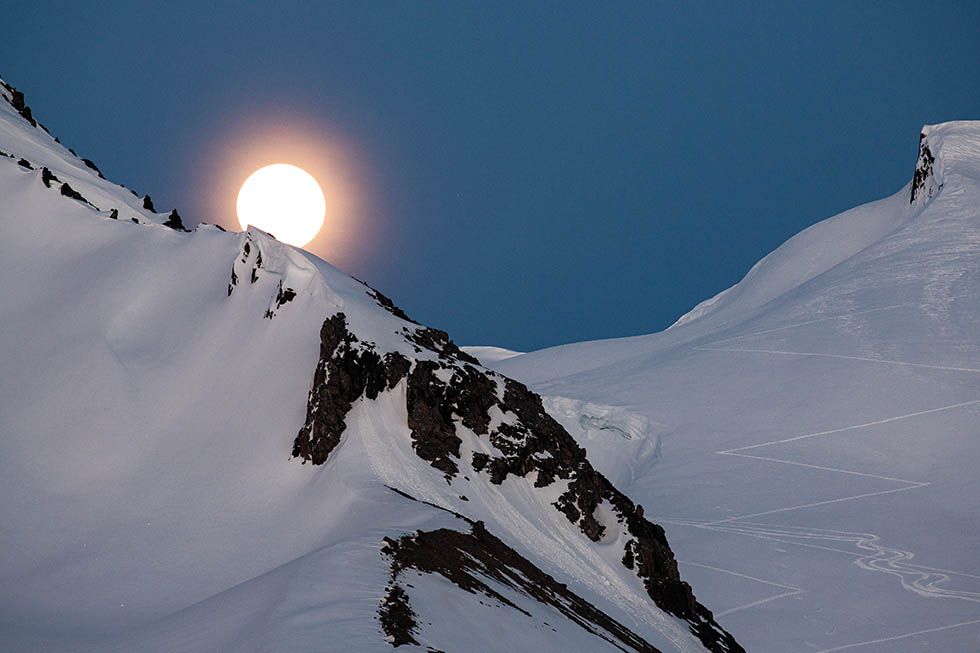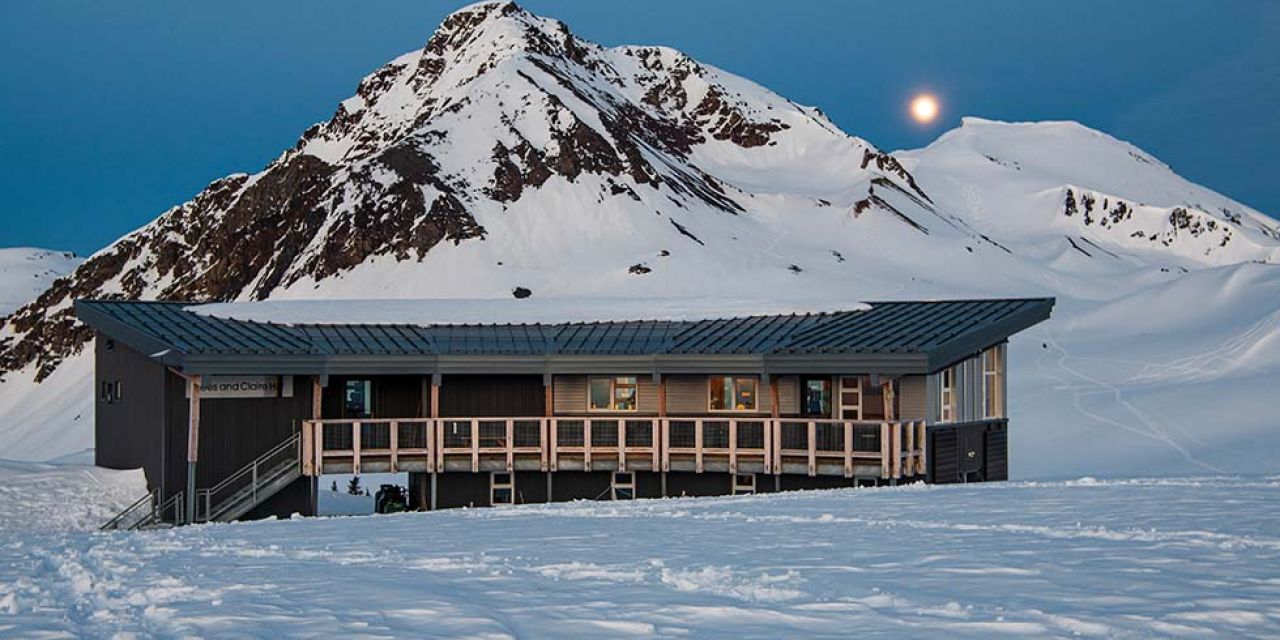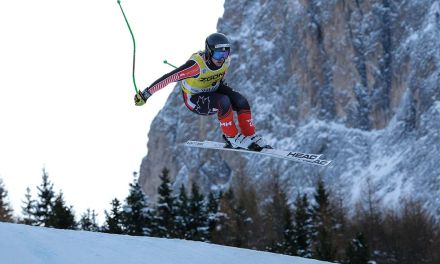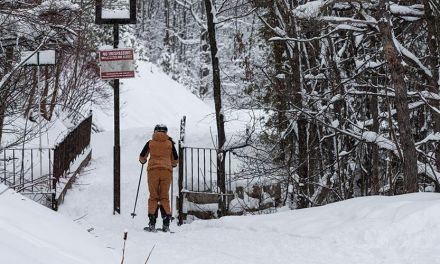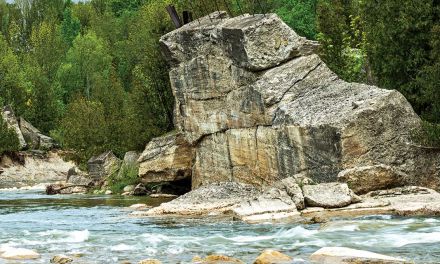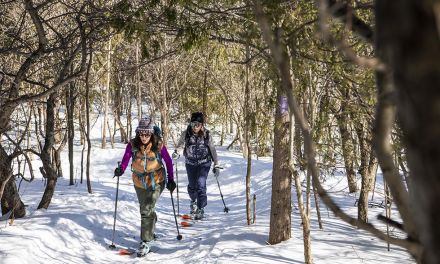A full moon rises over Fissile Peak and the Kees and Claire Hut, the first of three planned refuges along the Spearhead Traverse near Whistler, BC.
No Boundaries
by Cara Williams | photography by Clay Dolan
This backcountry refuge offers prime ski touring access and honours adventurous spirits, with roots stretching from Ontario to Whistler. With more huts planned, British Columbia’s Spearhead Traverse promises endless alpine lines and untouched powder for the ultimate backcountry experience.
The mountains hold a special kind of magic, where joy and fear coexist. No matter how prepared you are, things can go sideways when you least expect it. As more people venture beyond resort boundary lines, backcountry huts and the guides who lead the way become crucial lifelines in these unpredictable environments.
First completed in the 1960s, the Spearhead Traverse is a 34-kilometre alpine route that connects Whistler and Blackcomb Mountains. For over 50 years, hard-core mountaineers have navigated this route, camping under the stars or in snow-caves, but the dream of a connected hut system is now becoming a reality with the Spearhead Huts project.
On a bench just above the glacially formed Russet Lake, deep within Garibaldi Provincial Park, the Kees and Claire Hut (KC Hut) is the first of three planned refuges along the Spearhead. Having opened in 2019, it offers vital shelter for backcountry skiers, hikers, and climbers. Its creation was the result of countless volunteer hours, fundraising, and partnerships with organizations like the Kees Brenninkmeyer Foundation. To truly understand the significance of the hut, you need to know who Kees was— and understand his deep love for adventure, dedication to the mountains, and the legacy he left behind.
I had been living in Whistler for a few years when Cornelius Brenninkmeyer—known to everyone as Kees (pronounced “case”)—crashed onto the scene in the early 2000s. He had just joined Extremely Canadian, the steep skiing outfit I was working for at the time. A fellow Ontarian, Kees was the kind of skier who made the most exposed runs look like a cake walk. He was training for his Association of Canadian Mountain Guides (ACMG) ski guide certification, and it was clear he was destined for big things.

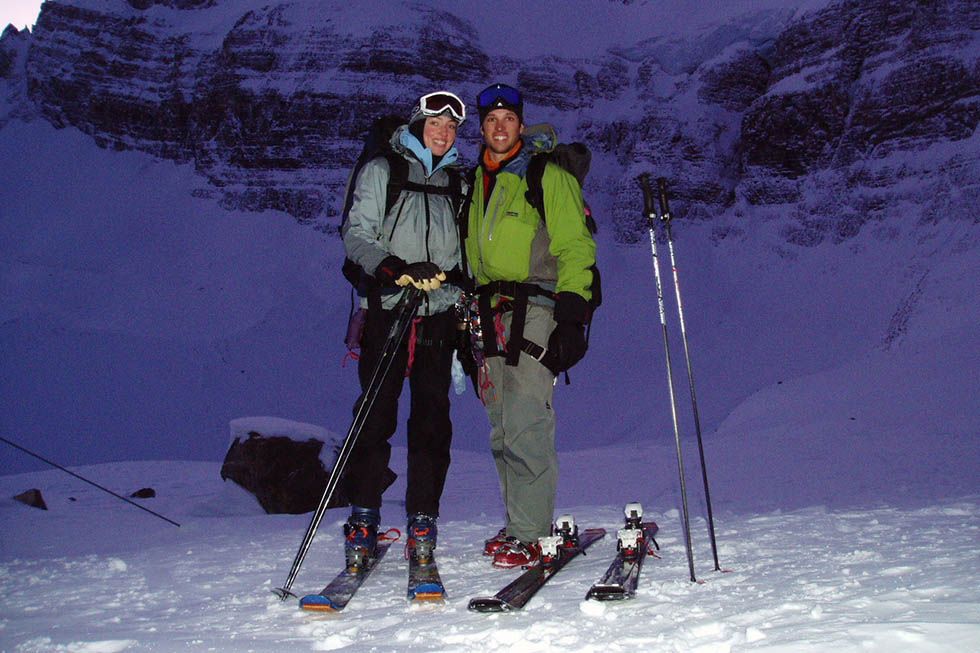
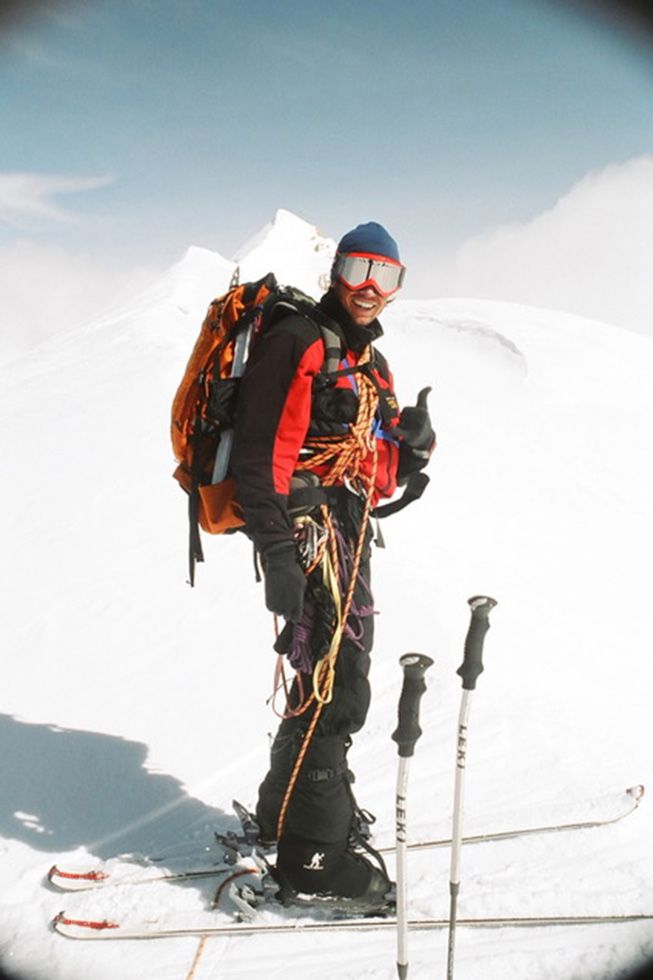
Kees Brenninkmeyer and Claire Dixon, photos courtesy of the Brenninkmeyer family.
Kees’s journey mirrored my own—moving from the flatlands of Ontario to the rugged Coast Mountains of British Columbia, fuelled by a passion for adventure and a love for the outdoors. He grew up skiing with the Ravens Ski program, which organized bus trips from Toronto to the Escarpment, and honed his skills ripping hardpack at Blue Mountain and Georgian Peaks. Despite being surrounded by the urban sprawl of the city, Kees’s adventurous spirit thrived, finding freedom and purpose on our small hills. His story is a testament to the transformative power of sport and the irresistible pull of the mountains.
Kees had been living in BC for over a decade when, in 2007, his life was tragically cut short while ski touring the Wapta Traverse in Alberta. He and his girlfriend, Claire Dixon, were volunteering as hut custodians for the Alpine Club of Canada. Kees was well on his way to achieving his dream of professional mountain guiding, and Claire, who had recently completed her physiotherapy degree, was eager to start her new career. When the pair didn’t return as expected, their families raised the alarm. Parks Canada searchers eventually found the couple in a collapsed snow cave they had built along a hutless section of the traverse. Claire was just 27, and Kees was 25.
At the time of Kees and Claire’s passing, I was living in Utah, expecting my first child, and travel wasn’t possible. Missing their celebration of life and not being able to mourn with friends hit hard. I found myself lost in memories—especially one unforgettable summer in Argentina, where Kees and I guided a ski trip in Las Leñas with Extremely Canadian.

Cara Williams enjoying a few well-earned powder turns after a long ascent.
The photos may be grainy, but the memories are clear: ski touring up the legendary Cerro Torrecias and grinning like kids under the endless Andean sky. Our ramshackle accommodations only got one English speaking channel, and we had no phones, no Wi-Fi. To this day, whenever I see the movie Big Trouble, which we watched on repeat for two weeks, I laugh and think of him.
Kees and Claire’s deaths sent waves of grief through the skiing community, but from that deep loss emerged a powerful vision: to create a lasting tribute that would honour their love for the mountains and provide future mountaineers with safe shelter. That vision took shape when in 2016, The Kees Brenninkmeyer Foundation donated $700,000 USD to the Spearhead Huts Society, sparking the involvement of the backcountry community and connecting with other key players like The Brett Carlson Memorial Group.
For the past few seasons, Extremely Canadian has been running guided overnight trips along the Spearhead Traverse— just one of the many itineraries they offer—and ever since the KC Hut opened in 2019, Jill Dunnigan (owner of Extremely Canadian) and I had been scheming to get a trip together. Last spring, we finally pulled it off.
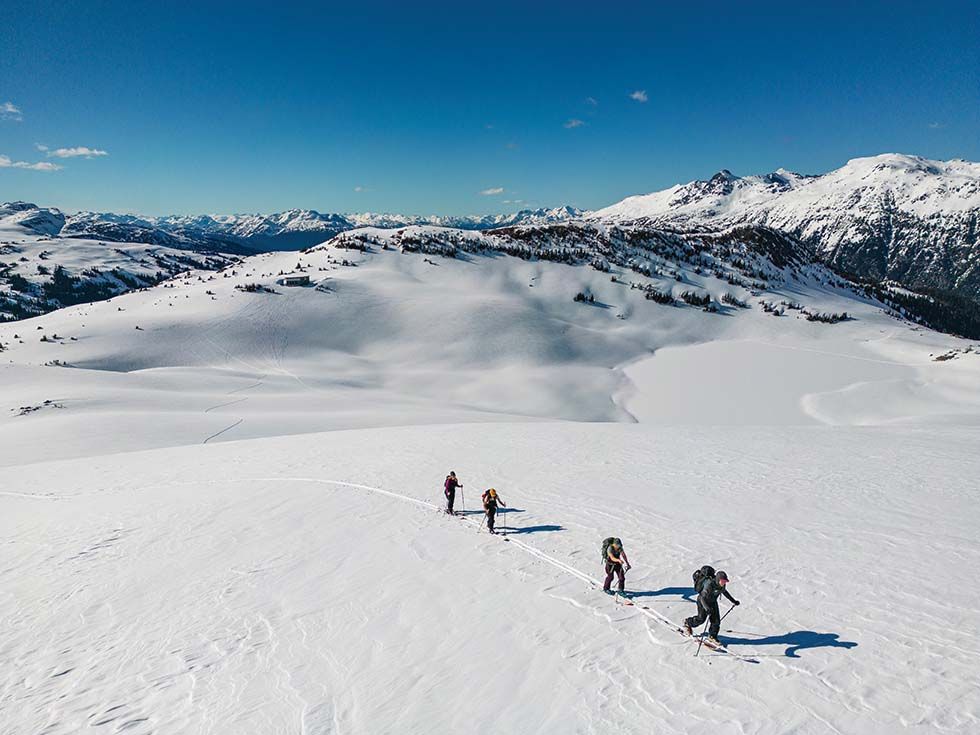
With the Kees and Claire Hut in the distance and Russet Lake below, the crew skins up Mt. Fissile for a few final laps of the day, chasing the last light and untouched lines.
It can take between three and six hours to get to the hut, depending on conditions and how much vertical you want to ski along the way. Fresh snow the day before made for smooth descents, and clear skies made skinning-up (somewhat) enjoyable.
Founded in 1994, Extremely Canadian earned its name by guiding skiers to lesser-known, “locals-only” terrain—places you’d probably never find or safely ski on your own. Equally renowned for their off-hill antics, our trip couldn’t have been timed better. It lined up perfectly with Extremely Canadian’s 30th Anniversary “Freakers Ball” at the Garibaldi Lift Company, a party so legendary it once made a global “best ski town party” list. With Whistler Blackcomb setting us up at the Aava Whistler Hotel, it was the ideal start to an epic adventure.
The party was amazing—though to be honest, it’s a bit of a blur. Afterwards, we took a much-needed recovery day. Then, we gathered ourselves, swallowed some vitamins, and headed to the Whistler Gondola with everything we’d need—sleeping bags, water, food, and avalanche gear—all on our backs. The hut accommodates 38 guests and requires reservations, but Extremely Canadian took care of all the details, leaving us free to enjoy the shred.
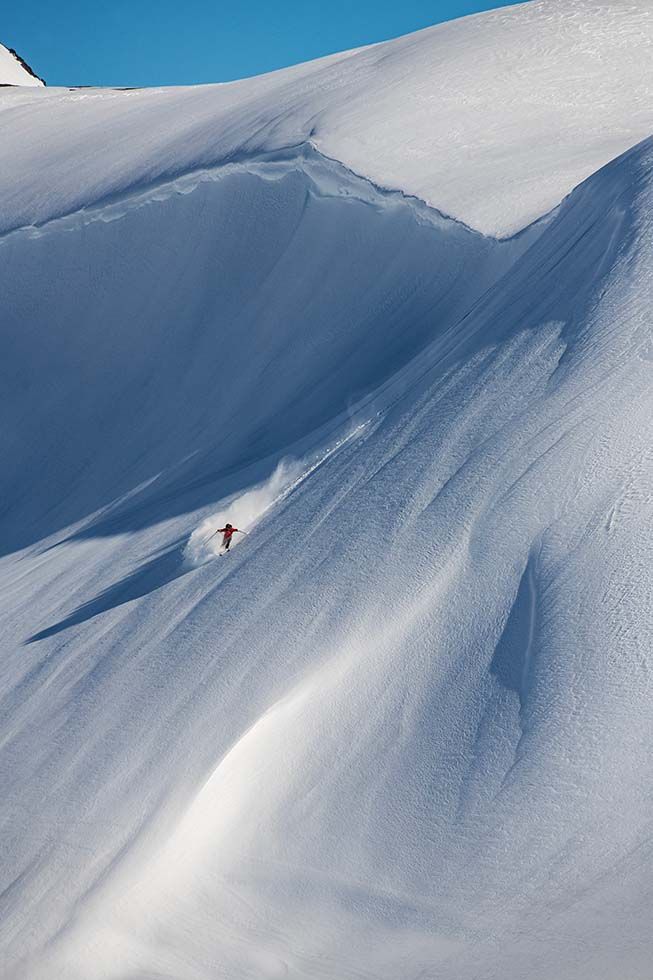
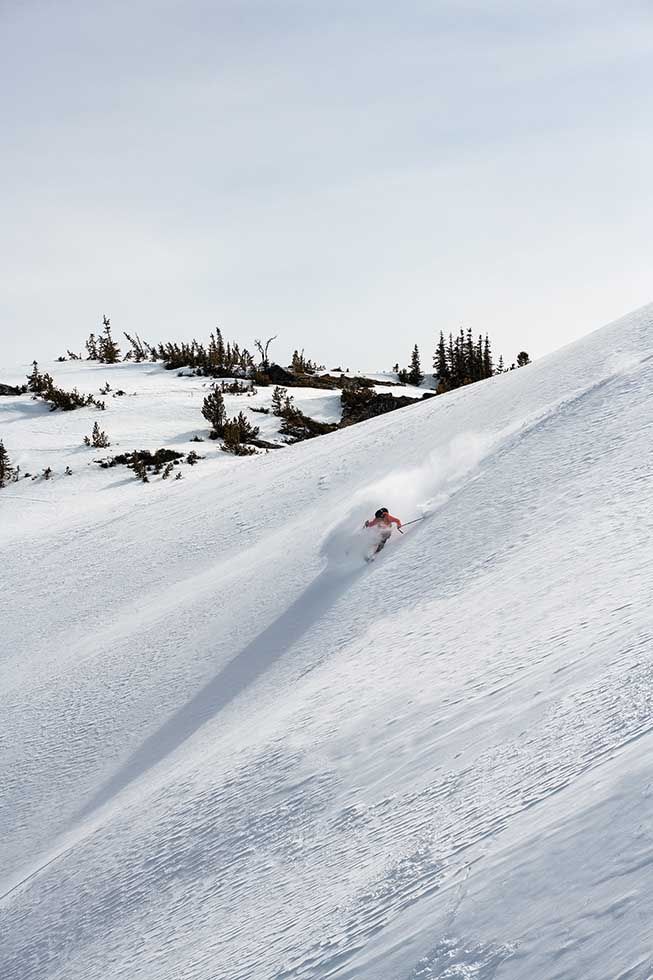
Extremely Canadian guide David Graham
The ski tour to the hut demands strong fitness and navigation skills, especially in poor weather. Venturing beyond the resort boundaries requires solid backcountry knowledge or the guidance of a professional—there’s no avalanche control out here. It can take between three and six hours to get to the hut, depending on conditions and how much vertical you want to ski along the way. Fresh snow the day before made for smooth descents, and clear skies made skinning-up (somewhat) enjoyable. With several skin transitions along the way, the breaks were a welcome relief—giving us time to catch our breath, sip water, share a laugh, and exchange high fives before pressing on. Jill and I often climbed together, reminiscing about Kees’s antics and laughing—it helped take our minds off the pain in our legs.
Our guide, David Graham, knew the route inside and out, having completed it dozens of times. He led us over the musical bumps—Flute and Oboe—the over Cowboy Ridge and down toward Singing Pass before we began the final ascent to the hut. At 6.9 kilometres with 490 metres of elevation gain (yes, I’m the nerd who Strava’d it), the climbs tested my endurance. The last stretch became a determined push, with each step feeling significant. The group had spread out, and as I crested the last rise alone, seeing the hut standing against the backdrop of Fissile Peak, a wave of emotion swept over me. Framed by snow-capped mountains, the cabin resembles a bird—watching over the mountains—like a guardian of the backcountry, embodying the spirits of those we’d lost, much like crows, who some believe carry the souls of the departed. It was a powerful moment, and I felt a release within me—the weight I had carried since Kees’s death finally lifted.
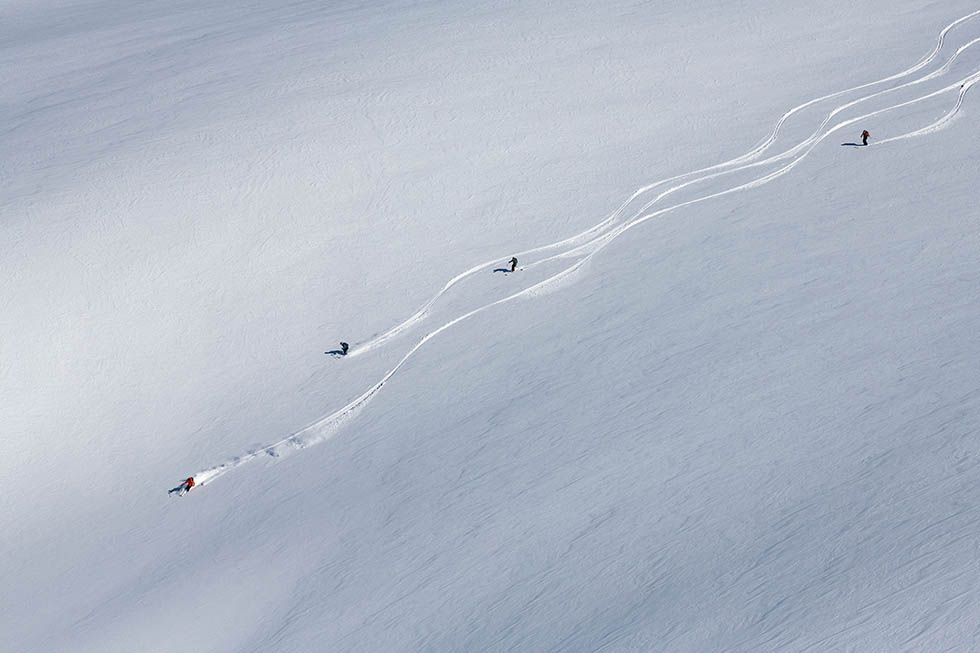
The group enjoying a few buttery, low-angle turns.
Once inside, the hut surpassed my expectations. It’s spacious and cleverly designed, with a communal kitchen, dining area, and a lounge with panoramic windows with views of Russet Lake. Words and photos simply don’t do it justice, but it’s safe to say you aren’t slumming it here. The hut is divided into two levels, with sleeping quarters on the lower floor. There are washroom facilities, including composting toilets, and a drying room for wet gear. Everything you pack in, you pack out. Our Extremely Canadian guides had done the heavy lifting and brought all the food we’d need for the night, and we all pitched in to cook it. We even packed a few bottles of wine, transferring them into soft Platypus water bladders, which travel much better than glass. After a day of touring, the hut became a lively gathering spot where our group connected with others, many of whom were on multi-day excursions. It was great to swap stories and warm our toes.
Following dinner, we retired to the Brett Carlson Lounge, a cozy corner off the kitchen, with a wood-burning fireplace and soft couches that soothed our aching legs. Brett was another friend who tragically passed in 2000 while attempting a road gap. He was just 24, and for many in my friend group, losing Brett was our first real encounter with death in the mountains. Over the years, the annual Brett Carlson fundraiser became a ritual, where we’d gather, party, and raise some money. The plan had always been to build a renegade hut “somewhere awesome” in his memory. Those dreams finally took shape in 2010 when the Brett Carlson Memorial Group joined forces with the Kees Brenninkmeyer and Spearhead Huts Foundations.
One of Brett’s skis hangs proudly on the lounge wall—its mate, a custom-made shot-ski (which I knew well back in the day), is locked beneath the stairs. Like a secret handshake, someone gave me the code, and as the full moon rose over Fissile, a mountain Brett had skied countless times, Jill and I took a shot—my first in about 15 years from this legendary relic. It was a special moment, a tribute to friends lost too soon, and a reminder of the passion and community fueling these projects.
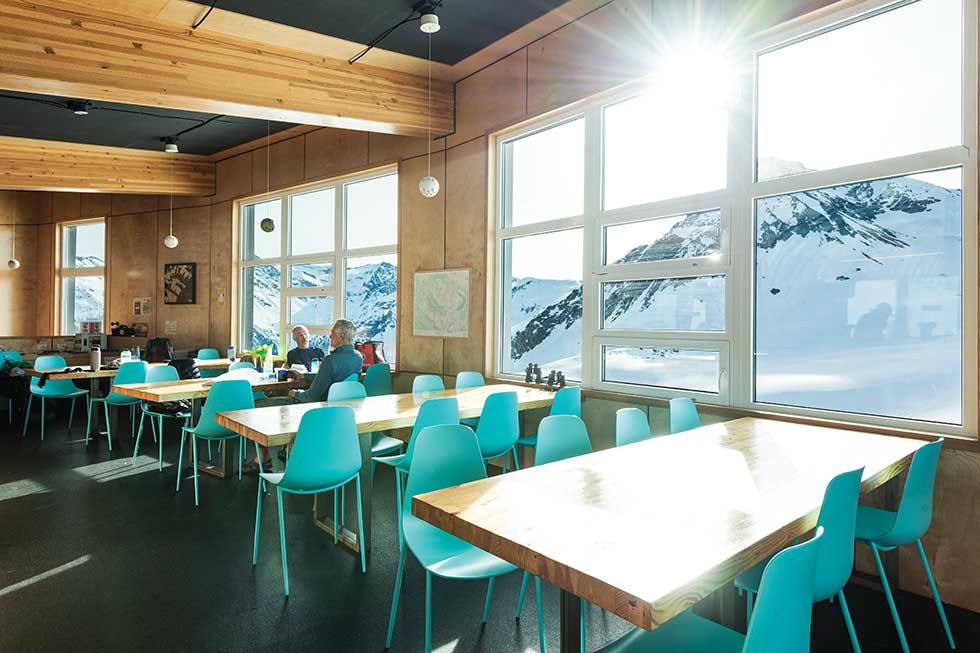
The communal dining area invites guests to gather, share meals and plan the next day’s adventure.
For those looking to extend the adventure, the KC Hut offers multi-day reservations, and provides immediate access to incredible ski touring. You can ski up and down iconic lines on Fissile Peak, explore the terrain around Cowboy Ridge, and on your way back, ski right into bounds at Symphony Chair on Whistler.
With the growing popularity of ski touring (often called skimo, or randonee) on the Escarpment, this trip is a perfect challenge for skinning enthusiasts. Whether you’re chasing steep descents or just enjoying the trek, the real magic lies in the journey through this stunning alpine environment.
Anytime you leave the ski area boundary, solid backcountry skills are a must—even if you’re experienced, booking a guide is smart. I recommend Extremely Canadian—they’ve got you covered with navigation, avalanche training, and essential gear. Check out extremelycanadian.com for more details.
Phase two of the Spearhead project will be the Macbeth Hut, located approximately halfway along the traverse, followed by the Pattison Hut on the north end near Blackcomb. For more information about Spearhead Huts and to make reservations, visit spearheadhuts.org. To donate to this worthy cause, or to learn more about the amazing work of the Kees Brenninkmeyer Foundation, visit keesbfoundation.org.
After experiencing it firsthand, it’s clear that the Kees and Claire Hut is more than just a cool place to visit; it’s a space to reflect on the beauty and unpredictability of the mountains—a tribute to the adventurous spirits of those taken too soon. “We are always thrilled to bring guests to the hut,” says Jill. “Kees loved sharing his passion for the mountains. He’d be stoked to know that others are doing the same, safely and comfortably in the Kees and Claire Hut.” E
